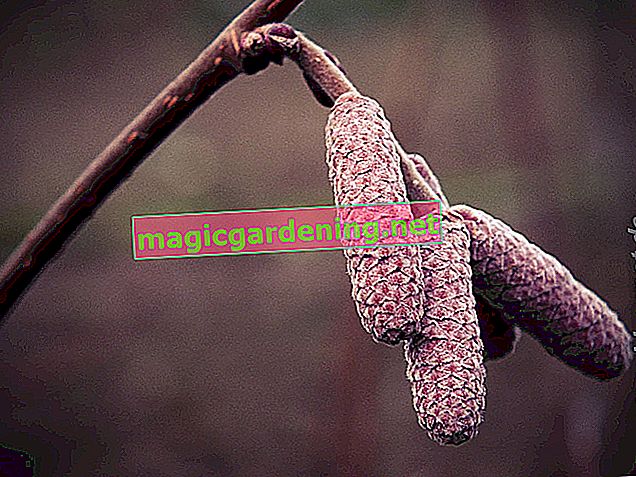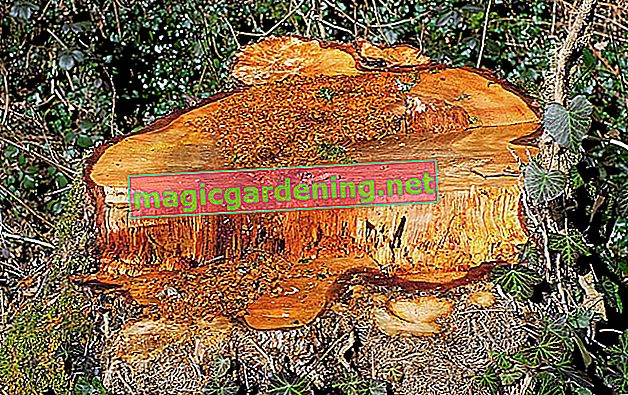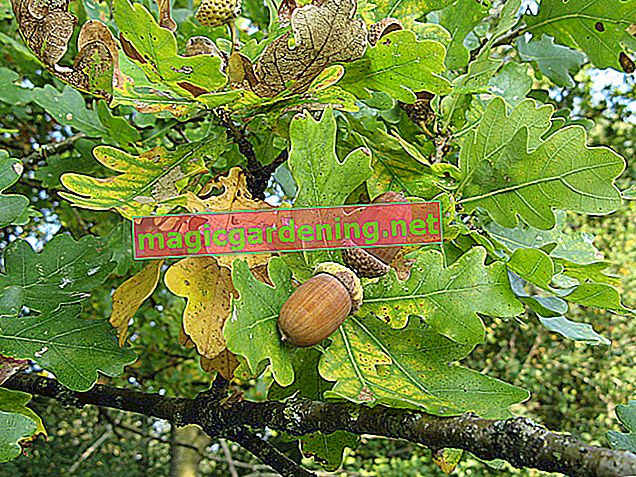
Which location does the trumpet flower prefer?
Trumpet flowers like it warm, sheltered and sunny, whereby the “foot” - ergo the roots - should be in the shade. A sunny spot on a house wall that radiates heat is perfect.
also read
- Carnation - location, care, reproduction & overwintering
- Evergreen magnolia - location, care, overwintering, reproduction
- The heyday of the trumpet flower
What ground conditions are ideal for the climbing trumpet?
The plant needs nutrient-rich, moist soil, as it is mainly found in damp swamp areas in its home and can only cope with drought with great difficulty. However, permanent wetness or waterlogging should be avoided.
Can the climbing trumpet also be cultivated in a pot?
The climbing trumpet needs a lot of moisture, but does not tolerate waterlogging. For this reason, you should ensure that the pot drains well.
How often should the trumpet flower be watered?
The climbing trumpet does not tolerate longer dry periods at all, so you should water the plant regularly, whereby the soil is well moistened every time. It also makes sense to mulch the root area, as this prevents the soil from drying out.
When and with which fertilizer can I fertilize the climbing trumpet?
In principle, it is sufficient to provide planted climbing trumpets with a little compost to sprout. Nitrogen-containing fertilizers should be used very sparingly as they stimulate growth but prevent flowering.
When and how is the trumpet flower cut back?
Since the climbing trumpet only develops its flowers on young shoots, the plant should be severely cut back in spring - ideally between February and March. Thin, weak or too long branches can also be cut all year round - the plant mainly blooms on short branches.
When does the climbing trumpet bloom?
The trumpet flower mostly blooms between July and October, depending on the variety.
My climbing trumpet doesn't bloom, why is that?
If the climbing trumpet does not bloom, it could be too shady a location. In addition, the plants do not bloom until they are around four years old.
How can I propagate trumpet flowers?
Climbing trumpets reproduce very reliably even through seeds and root runners. You can multiply the plants in a targeted manner by sowing, lowering or cuttings.
Is the climbing trumpet susceptible to certain diseases and pests?
The plant is not very susceptible to infestation by pests or diseases.
Is the climbing trumpet hardy?
The American climbing trumpet (Campsis radicans) is hardy to minus 15 ° C, while the more sensitive Chinese climbing trumpet (Campsis grandiflora) is quite sensitive to frosty temperatures. Winter protection is therefore always appropriate.
Tips
Since all parts of the climbing trumpet are poisonous, you should always wear gloves when gardening.








